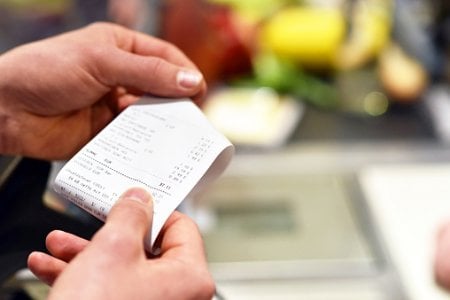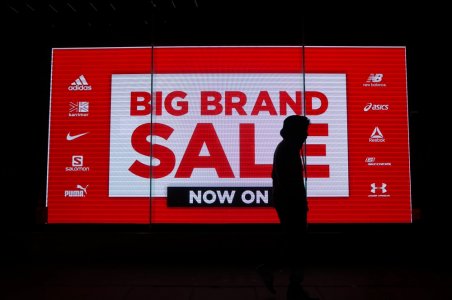Your guide to consumer rights: How misleading and inconsistent prices from retailers could mean, by law, they have to give you the item FOR FREE
- Replies 2
While checking out your groceries, have you ever caught one or two items scan in at a higher price than ticketed? One would naturally be perplexed by this – maybe even briefly bring it up to the staff but eventually shrug the issue off, completely unaware that there are several actions to take against these types of instances.
But as the cost of living skyrockets, the last thing we would want is to face an accumulation of hidden expenses disguised by misleading prices – and the best way to fight against it, you ask? It all comes down to brushing up on your knowledge of consumer rights.
Before we get into the nuts and bolts of the article, we just want to thank Deborah Blomqvist for sharing this information with us!
1. Multiple prices
Whenever a business displays more than one price for a good, it falls under ‘multiple pricing’. In cases such as this, they are required to either sell the item for the lowest displayed price or withdraw it completely from sale until the price is updated.
A display price is a price that is shown: directly on the item, on anything connected with or used with the item, on anything used to display the item, in a current catalogue that reasonably appears to apply to the goods, or on a register or a price scanner.
On the other hand, a price that is completely covered by another price, a per-unit price (which is a different way of expressing an item’s value), and a price that’s not converted to Australian currency are not considered displayed prices.
2. The Scanning Code of Practice
A handful of supermarkets including Coles, Woolworths, Aldi, and some IGA’s are signed up to a voluntary code called ‘The Scanning Code of Practice’.
One case study on scanned supermarket produce states: “While Coles Myer Limited, at the time of writing, is not a member of ASI, its stores (Coles Supermarkets and Bi-Lo) continue to comply with the Code of Practice.”
“In 1992, the Trade Practices Commission estimated that at least 83 percent of supermarket scanning checkouts in Australia are in stores that subscribe to the Code. The ASI has indicated that almost all of the products sold through its member companies are now scanned.”
The Scanning Code of Practice was introduced to address concerns made by consumers about being potentially overcharged by bar code scanning, which would then encourage retailers to develop better procedures to ensure that their prices are accurate.
Meaning that whenever an item is scanned for a higher price than what’s originally indicated on the shelf price, the customer is entitled to receive the item free of charge. You heard that right, you should get the item for free!
In addition, any subsequent identical items (if you have several of the same item) should be charged at a lower price. So, let’s say you reached out for two similar items – for example, two packets of biscuits in different flavours – and both are scanned at a higher price than indicated.
You’re then entitled to receiving both for free, as they are NOT the same item even though they are similar.
“Section 3 of the Code outlines the ‘item-free’ and ‘multiple purchase’ policies. If the scanned price of an item is higher than the shelf price or other displayed price, then the customer is entitled to that item free of charge.” said the case study.
“If multiple items bearing identical scan codes are purchased at a price higher than the shelf price or other displayed prices, the customer is entitled to the first item free and the other item at the lower display price.”
However, it’s important to note that the Scanning Code of Practice doesn’t apply to all items, as it has exclusions for tobacco, liquor, third party gift cards, items that don’t include a barcode, and items that retail for over $50.
Supermarkets that abide by the Code usually keep a copy by the registers or the service desk. It’s best to spot a copy beforehand because although we’re sure that the majority of the staff are lovely and have no issue with honouring the Code – a couple may simply be unaware.
And if the worst possibility should occur, you can always bring the issue up with a supervisor or the store manager if the staff refuses to budge. If the store still does not comply with the code, you may take your complaint to the Australian National Retailers Association (ANRA) by calling them: 02 8249 4520.
3. Misleading prices
Businesses are called not to mislead customers when advertising prices for their products or services. Here are some common examples of misleading prices:
“The intention is irrelevant. You may breach the law even if you thought the statement was correct when you made it.”
If you ever encounter price-related issues from a business and are unsure how to proceed, you may take the following steps:
1. Contact the business directly and explain the problem. In most cases, businesses won’t have a problem negotiating a middle ground or a solution for you quickly. Make sure to take note of your conversation and if necessary, follow up with an email or letter.
2. Consider commenting on the Facebook page of the business but keep it polite. Sometimes, it’s easier to reach out to businesses through their social media platforms than through emails and phone calls.
3. If you’re unable to resolve the problem with the business, contact your state or territory fair trading or consumer protection agency or the ACCC and lodge a complaint.
Knowing about your rights as a consumer can save you a substantial amount of money in the long run with little to no effort. So, before you head out to get your weekly grocery run over and done with, make sure to check your receipts for any possible discrepancies and don’t be afraid to hold your ground!
Learn more about shopping smart by watching the video below:
Video Credit: ACCCgovau
But as the cost of living skyrockets, the last thing we would want is to face an accumulation of hidden expenses disguised by misleading prices – and the best way to fight against it, you ask? It all comes down to brushing up on your knowledge of consumer rights.
Before we get into the nuts and bolts of the article, we just want to thank Deborah Blomqvist for sharing this information with us!
1. Multiple prices
Whenever a business displays more than one price for a good, it falls under ‘multiple pricing’. In cases such as this, they are required to either sell the item for the lowest displayed price or withdraw it completely from sale until the price is updated.
A display price is a price that is shown: directly on the item, on anything connected with or used with the item, on anything used to display the item, in a current catalogue that reasonably appears to apply to the goods, or on a register or a price scanner.
On the other hand, a price that is completely covered by another price, a per-unit price (which is a different way of expressing an item’s value), and a price that’s not converted to Australian currency are not considered displayed prices.
2. The Scanning Code of Practice
A handful of supermarkets including Coles, Woolworths, Aldi, and some IGA’s are signed up to a voluntary code called ‘The Scanning Code of Practice’.
One case study on scanned supermarket produce states: “While Coles Myer Limited, at the time of writing, is not a member of ASI, its stores (Coles Supermarkets and Bi-Lo) continue to comply with the Code of Practice.”
“In 1992, the Trade Practices Commission estimated that at least 83 percent of supermarket scanning checkouts in Australia are in stores that subscribe to the Code. The ASI has indicated that almost all of the products sold through its member companies are now scanned.”
The Scanning Code of Practice was introduced to address concerns made by consumers about being potentially overcharged by bar code scanning, which would then encourage retailers to develop better procedures to ensure that their prices are accurate.
Meaning that whenever an item is scanned for a higher price than what’s originally indicated on the shelf price, the customer is entitled to receive the item free of charge. You heard that right, you should get the item for free!
In addition, any subsequent identical items (if you have several of the same item) should be charged at a lower price. So, let’s say you reached out for two similar items – for example, two packets of biscuits in different flavours – and both are scanned at a higher price than indicated.
You’re then entitled to receiving both for free, as they are NOT the same item even though they are similar.
“Section 3 of the Code outlines the ‘item-free’ and ‘multiple purchase’ policies. If the scanned price of an item is higher than the shelf price or other displayed price, then the customer is entitled to that item free of charge.” said the case study.
“If multiple items bearing identical scan codes are purchased at a price higher than the shelf price or other displayed prices, the customer is entitled to the first item free and the other item at the lower display price.”
However, it’s important to note that the Scanning Code of Practice doesn’t apply to all items, as it has exclusions for tobacco, liquor, third party gift cards, items that don’t include a barcode, and items that retail for over $50.
Supermarkets that abide by the Code usually keep a copy by the registers or the service desk. It’s best to spot a copy beforehand because although we’re sure that the majority of the staff are lovely and have no issue with honouring the Code – a couple may simply be unaware.
And if the worst possibility should occur, you can always bring the issue up with a supervisor or the store manager if the staff refuses to budge. If the store still does not comply with the code, you may take your complaint to the Australian National Retailers Association (ANRA) by calling them: 02 8249 4520.
3. Misleading prices
Businesses are called not to mislead customers when advertising prices for their products or services. Here are some common examples of misleading prices:
- Displaying an incorrect ‘before’ price next to a sale price. The ‘before’ price needs to be the price that the goods were sold for in a reasonable period prior to the sale. The ‘before’ price also needs to have been applied to a reasonable number of sales ahead of the sale.
- Comparing the sale price to an untrue cost or a wholesale price.
- Comparing the price against a competitor's prices in a deceptive way, such as excluding important information or referring to different products.
- Showing a price that only applies to certain customers without clarifying the conditions attached to the price. The main price must be displayed in a way that can be easily perceived.
“The intention is irrelevant. You may breach the law even if you thought the statement was correct when you made it.”
If you ever encounter price-related issues from a business and are unsure how to proceed, you may take the following steps:
1. Contact the business directly and explain the problem. In most cases, businesses won’t have a problem negotiating a middle ground or a solution for you quickly. Make sure to take note of your conversation and if necessary, follow up with an email or letter.
2. Consider commenting on the Facebook page of the business but keep it polite. Sometimes, it’s easier to reach out to businesses through their social media platforms than through emails and phone calls.
3. If you’re unable to resolve the problem with the business, contact your state or territory fair trading or consumer protection agency or the ACCC and lodge a complaint.
Knowing about your rights as a consumer can save you a substantial amount of money in the long run with little to no effort. So, before you head out to get your weekly grocery run over and done with, make sure to check your receipts for any possible discrepancies and don’t be afraid to hold your ground!
Learn more about shopping smart by watching the video below:
Video Credit: ACCCgovau










